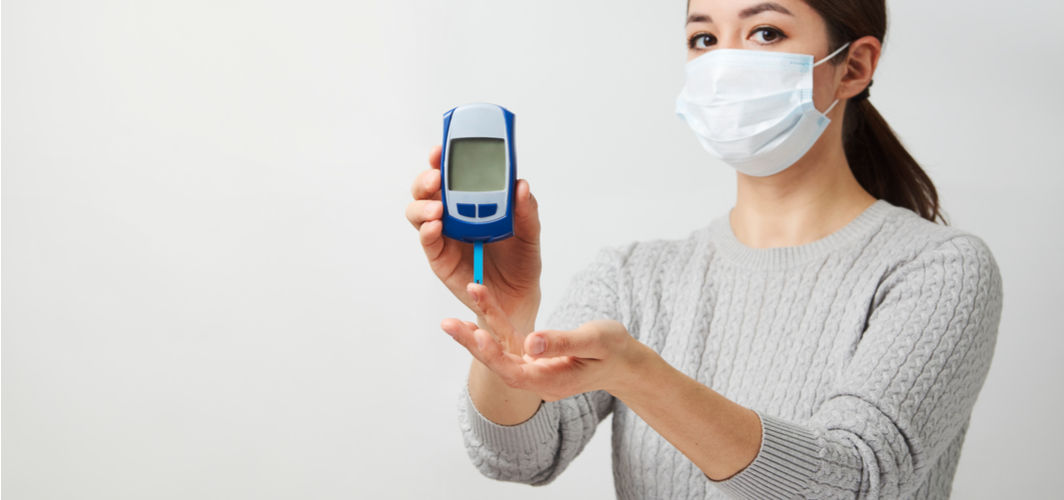Diabetes Management
Can High Ozone Levels Cause Significant Lung Damage in Diabetics?
4 min read
By Apollo 24/7, Published on - 19 December 2020, Updated on - 31 August 2023
Share this article
0
1 like

How is ozone gas harmful to the lungs?
- Inflammation of the space between the lungs and its parenchyma (outer covering)
- Increased production of inflammatory mediators in the lungs
- Increased risk of asthma
- Change in the architecture of lungs
- Scarring of the lungs resulting in idiopathic pulmonary fibrosis
How do high ozone levels affect the lungs of people with diabetes?
- There is a direct relationship between insulin resistance levels and the severity of inflammation and scarring in the lungs.
- Diabetes prone subjects were more susceptible to inflammation and showed excessive changes in the lung tissues after getting exposed to ozone repeatedly.
- Exposure to ozone can exacerbate scarring of lungs (pulmonary fibrosis) in diabetics.
What can be done to prevent lung damage?
- People diagnosed with diabetes must keep their blood sugar levels under control. Those with a family history of diabetes must get their blood sugar levels checked every 3 months.
- Diabetics and pre-diabetics must avoid high-fat, calorie-rich food as it can lead to obesity and insulin resistance in the body. They must take up some form of exercise to keep themselves active and healthy.
- People with diabetes living in extremely polluted cities must avoid stepping out of their homes early in the morning as the pollution levels are at a peak during those hours. They must keep their windows closed during the mornings and evenings.
- Before stepping out, affected people must use a good quality mask preferably N95, N99 or N100 mask as they can filter out the finest pollution particles.
- People with diabetes or pre-diabetes can install air purifiers at their homes to filter out the pollutants from the indoor air.
Conclusion
Diabetes Management
Leave Comment
Recommended for you

Diabetes Management
Best Exercises For Diabetes Prevention
Regular exercise is essential for managing and preventing type 2 diabetes. It improves blood glucose control, aids in weight management, and addresses common health issues in older adults. It's important to consult a healthcare professional before starting an exercise program. Read on to learn more about how exercise can benefit diabetics.

Diabetes Management
How Can Diabetes Patients Boost Immunity During COVID-19?
Diabetes patients can boost immunity by maintaining good blood sugar control, adopting a healthy and balanced diet, getting regular exercise, prioritizing quality sleep, managing stress levels, practicing good hygiene, receiving recommended vaccinations on time, and staying connected with healthcare providers for guidance and support.

Diabetes Management
Numbness and Tingling: A Sign of Diabetes?
Diabetic neuropathy, characterised by tingling and numbness, can develop due to uncontrolled blood sugar levels. Different types of neuropathy can affect various parts of the body. There are measures you can take to manage and slow down the progression of diabetic neuropathy. It is important to consult a doctor if experiencing symptoms or to get screened for diabetic neuropathy.
Subscribe
Sign up for our free Health Library Daily Newsletter
Get doctor-approved health tips, news, and more.
Visual Stories

8 Fruits That are Incredibly Healthy for Diabetes
Tap to continue exploring
Recommended for you

Diabetes Management
Best Exercises For Diabetes Prevention
Regular exercise is essential for managing and preventing type 2 diabetes. It improves blood glucose control, aids in weight management, and addresses common health issues in older adults. It's important to consult a healthcare professional before starting an exercise program. Read on to learn more about how exercise can benefit diabetics.

Diabetes Management
How Can Diabetes Patients Boost Immunity During COVID-19?
Diabetes patients can boost immunity by maintaining good blood sugar control, adopting a healthy and balanced diet, getting regular exercise, prioritizing quality sleep, managing stress levels, practicing good hygiene, receiving recommended vaccinations on time, and staying connected with healthcare providers for guidance and support.

Diabetes Management
Numbness and Tingling: A Sign of Diabetes?
Diabetic neuropathy, characterised by tingling and numbness, can develop due to uncontrolled blood sugar levels. Different types of neuropathy can affect various parts of the body. There are measures you can take to manage and slow down the progression of diabetic neuropathy. It is important to consult a doctor if experiencing symptoms or to get screened for diabetic neuropathy.